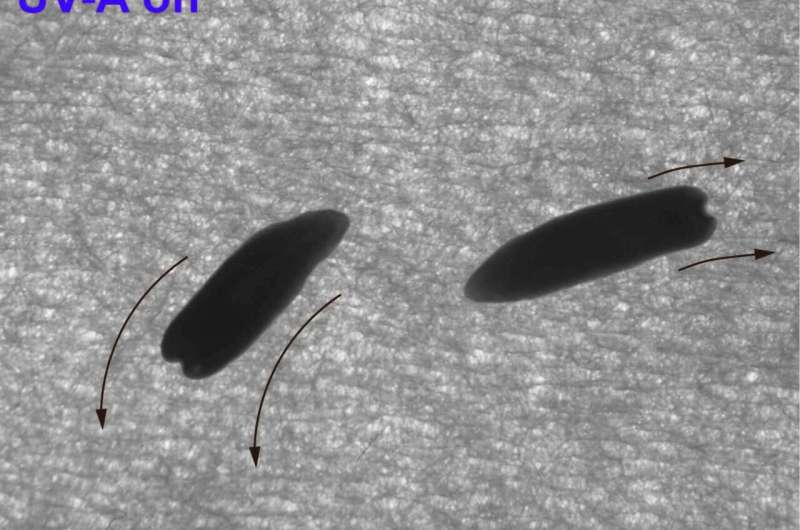May 7, 2021 report
Decapitated flatworms still sense light

A team of researchers from the Institute for Stem Cell Science and Regenerative Medicine, the Technology & Research Academy University and the University of Hyderabad, all in India, has found that flatworms are able to sense light exposure even after decapitation. The researchers have published their findings in Proceedings of the National Academy of Sciences.
The work involved studying the anatomy of planarians, a type of flatworm. The microscopic creatures have soft bodies but no complex organs. They do have two eyes, however, which are connected to nerve cells in their head. Prior research has shown that the eyes of planarians can sense ultraviolet light. When UV light is shone on them, they wriggle away. In this new effort, the researchers found that the flatworms can continue to sense light even after their heads (including their eyes) have been cut off. Prior research has shown that planarians can survive having decapitation and regrow their heads. But it was not previously known that they could still sense light.
After discovering that the flatworms would still wriggle away from a UV light, the researchers took a closer look at worm anatomy. They found the worms produce a kind of protein known as an opsin—prior research has shown that these proteins are sensitive to light. The flatworms, it turned out, produce two kinds of them. They also found that the cells that produce them are arrayed across the body of the worms. Oddly, they also found that certain pigment cells that were more centrally located produced only one kind of the protein. Those cells that were located more widely were found to trigger movement, which resulted in wriggling away from the light.
The researchers also found that only adult worms were able to continue sensing light after decapitation. And they found that when the flatworms went into a resting state, their bodies react to light, even in the absence of other sensory information such as movement. The researchers suggest this indicates that the worms are able to avoid damage due to UV light even when sleeping.
More information: Nishan Shettigar et al. Discovery of a body-wide photosensory array that matures in an adult-like animal and mediates eye–brain-independent movement and arousal, Proceedings of the National Academy of Sciences (2021). DOI: 10.1073/pnas.2021426118
Journal information: Proceedings of the National Academy of Sciences
© 2021 Science X Network




















